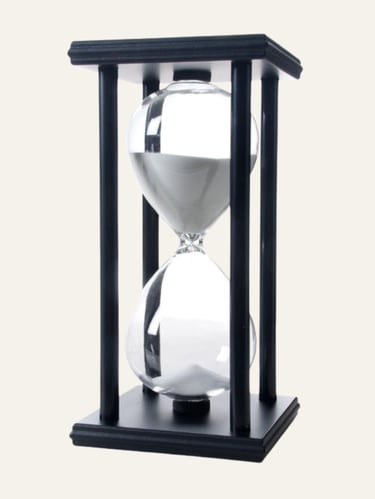Find Your Joy & Creativity
When the Scene Stalls — What to Change First (and Why It Works)
Ana
7/4/20255 min read


(Disclosure: As an Amazon Associate, I earn from qualifying purchases. This comes at no extra cost to you.)
Dear Joyvity™ Friends,
As you probably know all too well, sometimes the writing just won’t move forward, no matter how hard you try.. The scene just… sits there. No spark, no pull. Just dull, asphyxiating silence. You reread the lines, feel nothing and can’t move forward.
That doesn’t mean you’ve lost the thread — it means something on the page is resisting movement. And often, the fix isn’t in the words. It’s in the world around them.
Here’s what seasoned writers do when the scene won’t budge — and why these small changes can reignite flow. I’ve used them too, to climb out of the hole.
1. Change the Setting
If your scene is stuck, your character might be too.
Are they pacing in their apartment again? Sitting at the same desk, in the same kitchen, saying the same lines? Shift them. Move the conversation to a street corner, a grocery store, or a darkened car. Settings carry tension — new ones shake it loose.
Why it works: Fresh context forces different reactions. It triggers sensory change, unearths new emotional beats, and gives the scene something to play against.
2. Change the Stakes
If your characters are just talking, but nothing feels urgent — raise the cost of silence.
Give your scene something to lose. What happens if this moment goes wrong? What if someone overhears? What if a decision has to be made now? When a character’s choice carries weight, the story starts moving again.
Why it works: Stakes add friction. And friction is momentum waiting to happen.
3. Change the Weather
This one seems simple, but it’s a secret weapon.
Rain, heat, wind, snow — external forces stir internal responses. A tense scene in a humid room feels wildly different than one unfolding in crisp autumn air. If the energy of your scene is flat, make the weather do something.
Why it works: Weather reflects tone and emotion. It shapes mood, pacing, even dialogue — and often gives the scene the texture it was missing.
4. Change the Power Dynamic
Scenes stall when characters have nothing to push against.
Flip the balance. Give one character the upper hand. Make the other scramble to regain control. Reversals are the heartbeat of drama — they keep the reader leaning in.
Why it works: Power shifts demand action. They create new goals, new tension, and new angles of pursuit — which means your characters can’t stay still.
5. Change What’s Not Being Said
Sometimes what breaks a scene isn’t what’s on the page — it’s what’s missing.
Ask yourself: What are these characters avoiding? What truth hovers in the air but doesn’t get named? Inject silence, subtext, and contradiction. Not every line needs to be direct — in fact, the best ones rarely are.
Why it works: Unspoken truths pull the reader deeper. They make even quiet moments hum with meaning.
✦ ✦ ✦ Your Writing Habits and Rituals Matter
Scenes get stuck. Writers do too. But showing up anyway — that’s the difference between having a draft and having a dream. So build yourself a ritual that invites momentum.
Whether it’s lighting a candle before you begin, setting your hourglass for 60 focused minutes, or simply holding a pen that feels like yours — small rituals create rhythm. And rhythm creates progress. Daily progress gets you to the finish line.
I start all writing sessions with a few minutes of journaling which generally have nothing to do with my book — more often, it’s about clearing the inner mental scramble. I always journal by hand — the act of slowing down, pen to paper, allows my natural rhythm to surface. I write daily, no joke. I feel like I need to enter that world to bring it to paper during the writing of the first draft. (We’ll talk about editing another time.)
Here are the physical tools I use in my writing ritual and why. I hope they inspire you as you build yours as well.
Journal – PU Leather, elegant and practical, available in 10 colors


Its thread-bound lay-flat feature makes it easy for all hand users to write on every page. It has 216 ruled pages that don’t ghost or bleed-through. Just lovely!
Pen – Bic Velocity 1.0 in black
I have used these for years due to their comfortable grip and easy glide system. I won't write with anything else!


A Candle That Grounds You
Choose a scent that signals focus — sandalwood, lavender, or something personal that reminds you of warmth and stillness. This here is the one I prefer.


A Ceramic Mug That Feels Like Yours (Unisex)
There’s something grounding about holding the same mug every day — it becomes part of your creative identity. I love this one: the image on the outside, the writing on the inside, the feel & the shape.


An Hourglass That Binds Your Time
Flipping an hourglass at the start of your writing block turns time into something tangible — a visual ritual that signals focus, presence, and the gentle pressure of now. This is mine - 60min.


👉 You can also explore more in my gift guide for writers: Gift Ideas to Support a Writer’s Daily Rituals
Final Thoughts
Every writer hits a wall — it doesn’t mean the story’s broken. It just means something needs to shift. A new setting, a sharper stake, a quiet power reversal… these small adjustments can unlock everything. So next time a scene stalls, try changing the frame before you question the frame of mind. You might be closer to flow than you think.
Wishing you words that move and moments that spark —
Ana 🕊️
Copyright © 2025 Ana and Joyvity™. All Rights Reserved.